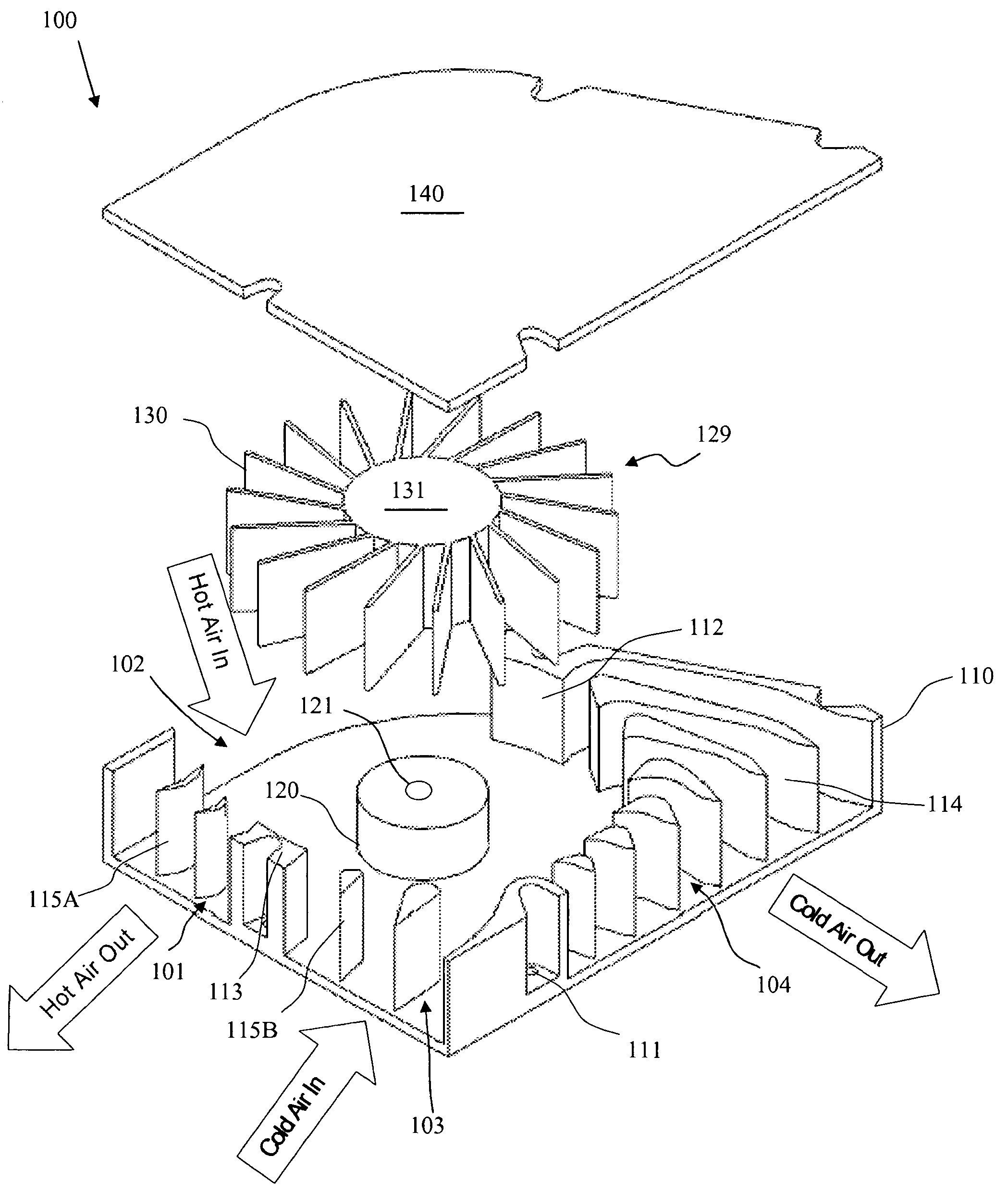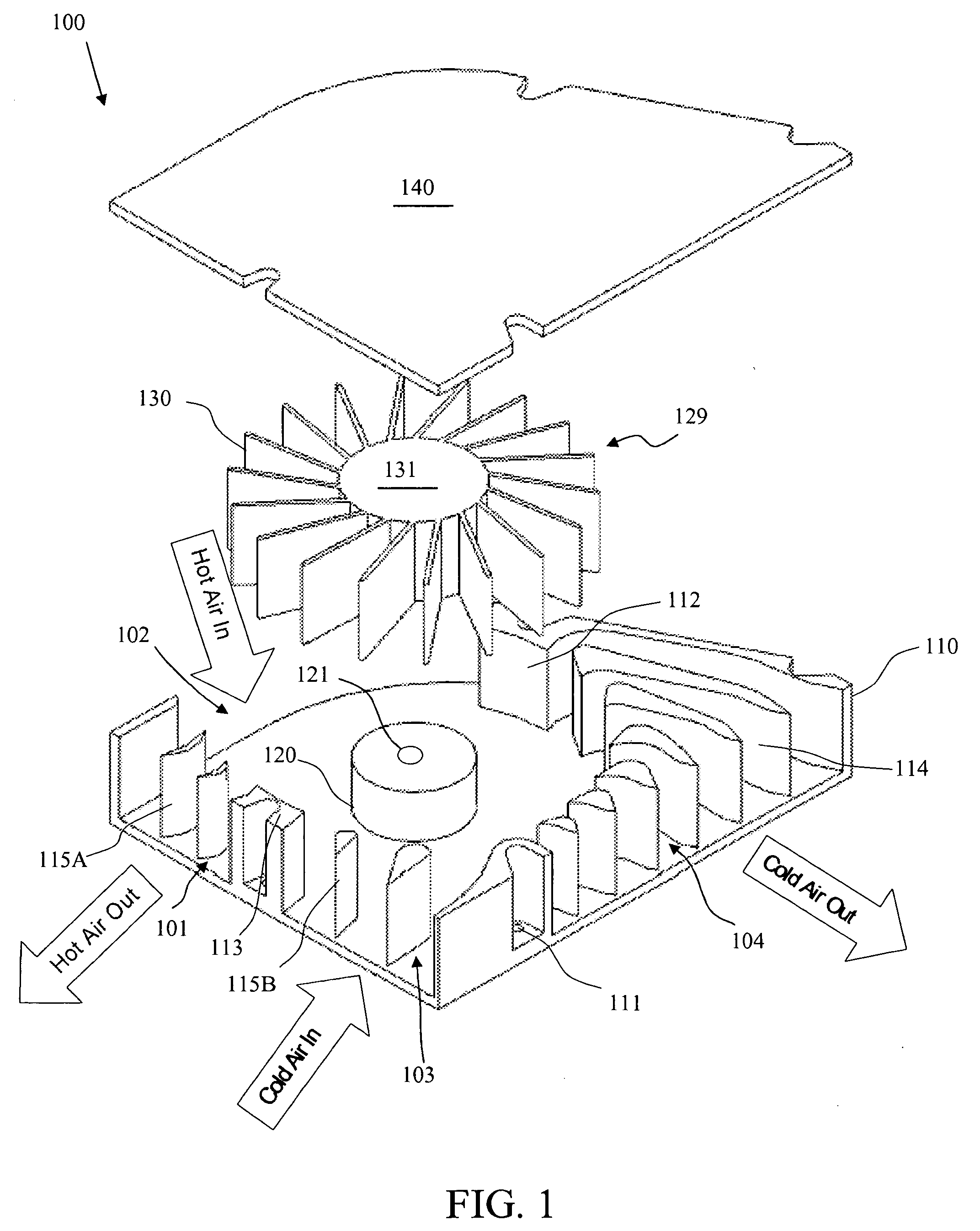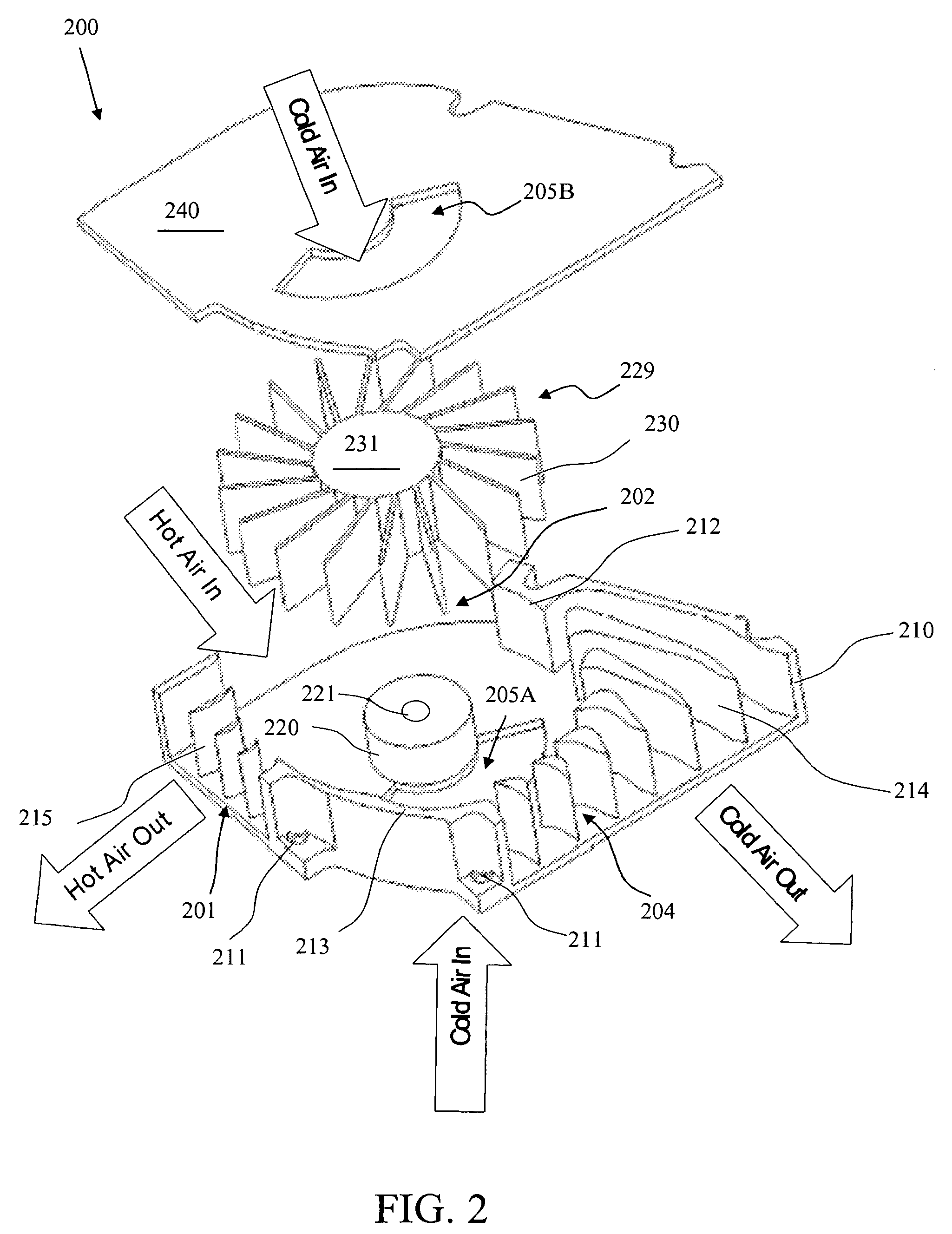Bi-directional blowers for cooling computers
a laptop computer and bi-directional technology, applied in the direction of machines/engines, stators, liquid fuel engines, etc., can solve the problems of real challenge, less air driven, and less efficient centrifugal blowers
- Summary
- Abstract
- Description
- Claims
- Application Information
AI Technical Summary
Benefits of technology
Problems solved by technology
Method used
Image
Examples
Embodiment Construction
[0016] One objective of the present invention is to provide a bi-directional blower that simultaneously blows hot air out from a system box and draws ambient air into the system box.
[0017] Another objective of the present invention is to provide airfoils in the inlet and the outlet of a blower to control air flow volume and velocity for more efficient air cooling.
[0018] Another objective of the present invention is to provide a bi-directional blower that can be used for space constrained conditions, such as in laptop computers, thin blade servers, and PCI cards (e.g., graphics cards), for efficient duct cooling.
[0019] Another objective of the present invention is to provide a bi-directional blower that draws air into the blower by “negative pressure” to enhance heat dissipation for a laptop computer where the inlets and outlets are located on the side of the laptop. Thus, the air gap between the bottom of the laptop and the desktop can be eliminated and the desk can serve as a na...
PUM
 Login to View More
Login to View More Abstract
Description
Claims
Application Information
 Login to View More
Login to View More - R&D
- Intellectual Property
- Life Sciences
- Materials
- Tech Scout
- Unparalleled Data Quality
- Higher Quality Content
- 60% Fewer Hallucinations
Browse by: Latest US Patents, China's latest patents, Technical Efficacy Thesaurus, Application Domain, Technology Topic, Popular Technical Reports.
© 2025 PatSnap. All rights reserved.Legal|Privacy policy|Modern Slavery Act Transparency Statement|Sitemap|About US| Contact US: help@patsnap.com



